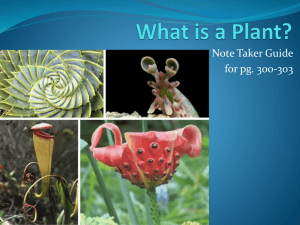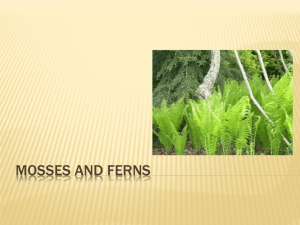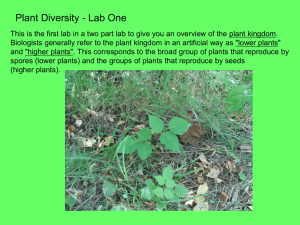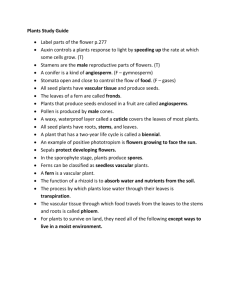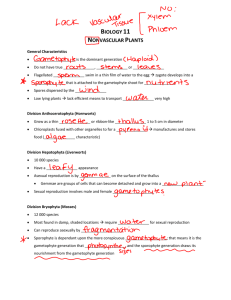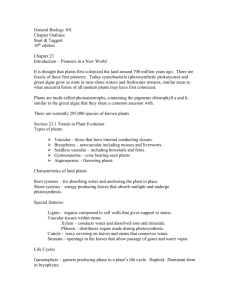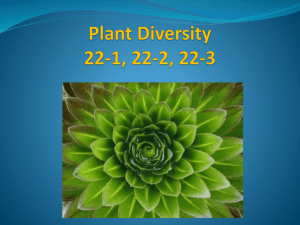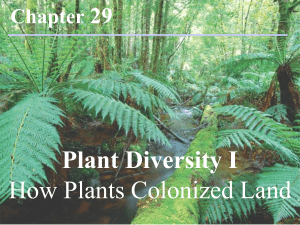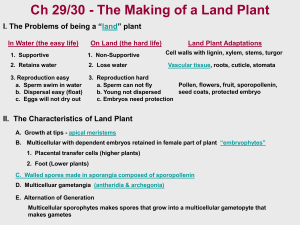Nancy Boury's Study Guide Ch. 29
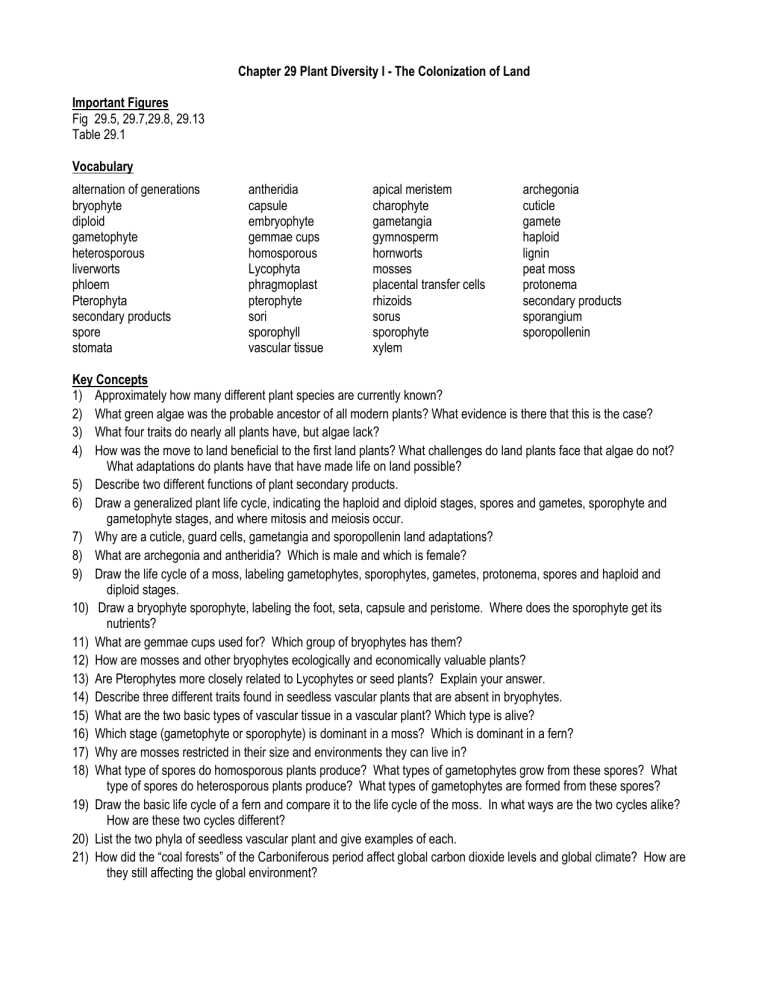
Chapter 29 Plant Diversity I - The Colonization of Land
Important Figures
Fig 29.5, 29.7,29.8, 29.13
Table 29.1
Vocabulary alternation of generations bryophyte diploid gametophyte heterosporous liverworts phloem antheridia capsule embryophyte gemmae cups homosporous
Lycophyta phragmoplast apical meristem charophyte gametangia gymnosperm hornworts mosses placental transfer cells
Pterophyta secondary products spore stomata pterophyte sori sporophyll vascular tissue rhizoids sorus sporophyte xylem
Key Concepts
1) Approximately how many different plant species are currently known? archegonia cuticle gamete haploid lignin peat moss protonema secondary products sporangium sporopollenin
2) What green algae was the probable ancestor of all modern plants? What evidence is there that this is the case?
3) What four traits do nearly all plants have, but algae lack?
4) How was the move to land beneficial to the first land plants? What challenges do land plants face that algae do not?
What adaptations do plants have that have made life on land possible?
5) Describe two different functions of plant secondary products.
6) Draw a generalized plant life cycle, indicating the haploid and diploid stages, spores and gametes, sporophyte and gametophyte stages, and where mitosis and meiosis occur.
7) Why are a cuticle, guard cells, gametangia and sporopollenin land adaptations?
8) What are archegonia and antheridia? Which is male and which is female?
9) Draw the life cycle of a moss, labeling gametophytes, sporophytes, gametes, protonema, spores and haploid and diploid stages.
10) Draw a bryophyte sporophyte, labeling the foot, seta, capsule and peristome. Where does the sporophyte get its nutrients?
11) What are gemmae cups used for? Which group of bryophytes has them?
12) How are mosses and other bryophytes ecologically and economically valuable plants?
13) Are Pterophytes more closely related to Lycophytes or seed plants? Explain your answer.
14) Describe three different traits found in seedless vascular plants that are absent in bryophytes.
15) What are the two basic types of vascular tissue in a vascular plant? Which type is alive?
16) Which stage (gametophyte or sporophyte) is dominant in a moss? Which is dominant in a fern?
17) Why are mosses restricted in their size and environments they can live in?
18) What type of spores do homosporous plants produce? What types of gametophytes grow from these spores? What type of spores do heterosporous plants produce? What types of gametophytes are formed from these spores?
19) Draw the basic life cycle of a fern and compare it to the life cycle of the moss. In what ways are the two cycles alike?
How are these two cycles different?
20) List the two phyla of seedless vascular plant and give examples of each.
21) How did the “coal forests” of the Carboniferous period affect global carbon dioxide levels and global climate? How are they still affecting the global environment?
